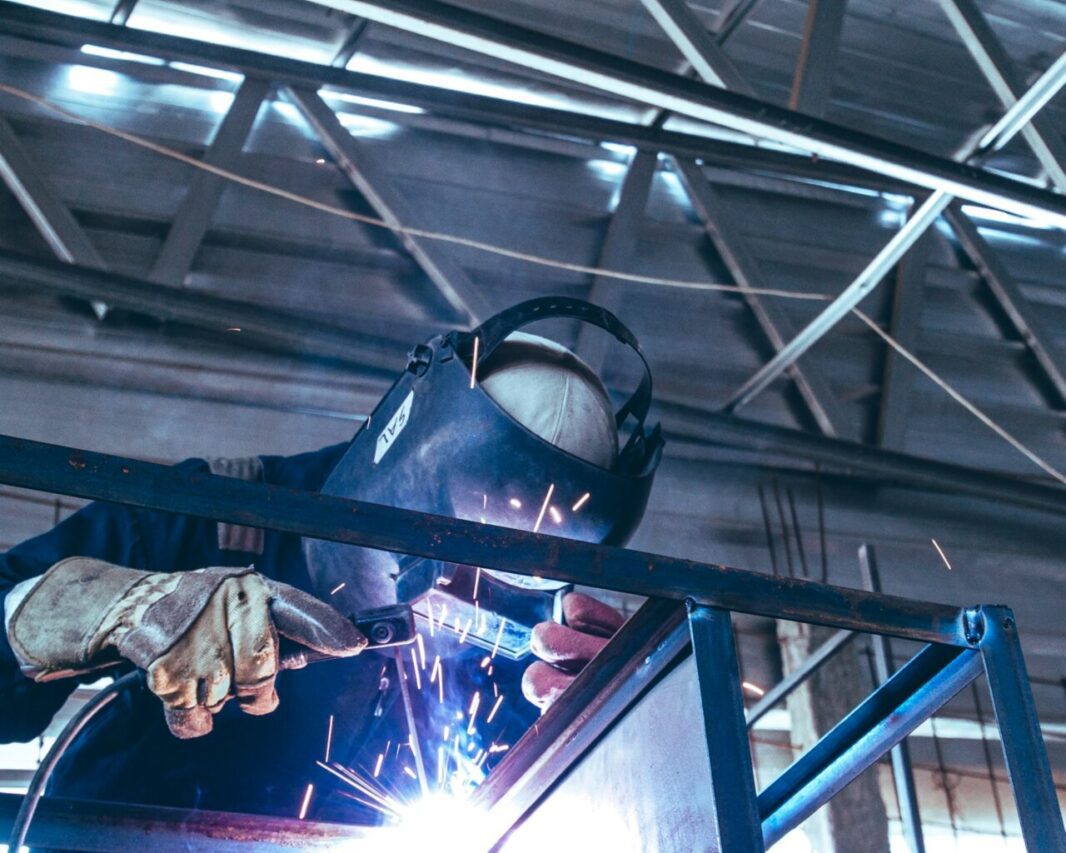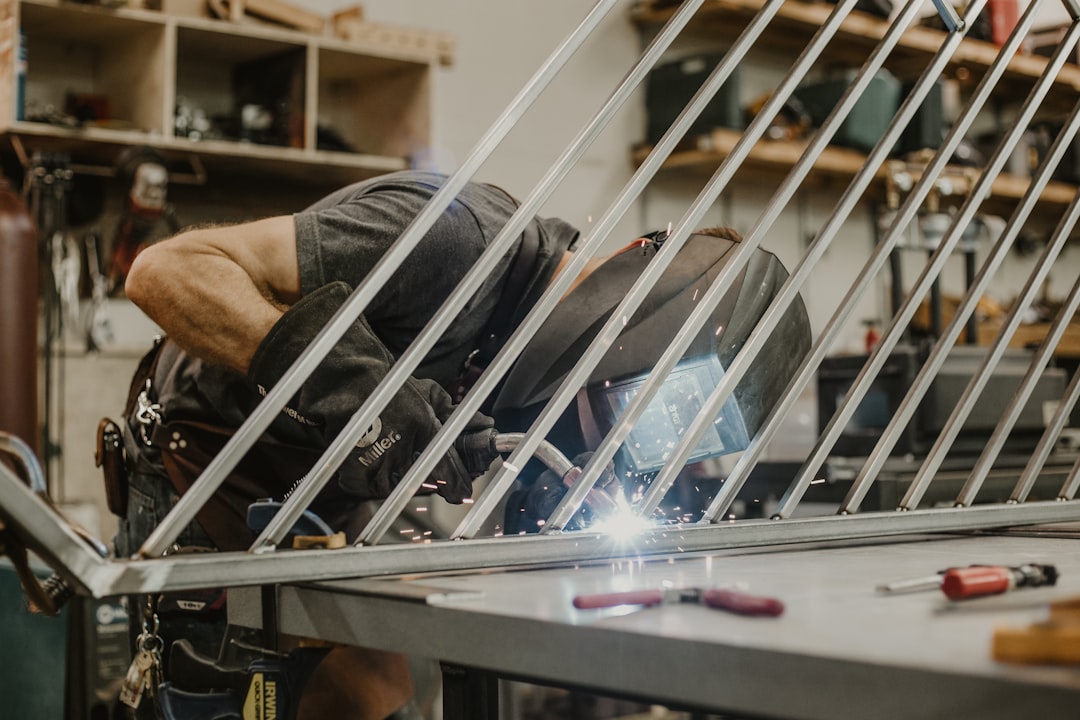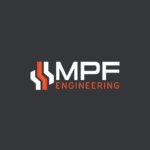Explore the different types of welding techniques and their applications in diverse industries, highlighting the importance of skilled professionals in ensuring structural integrity and quality, and driving innovation and technological advancements in metal fabrication.
Introduction to Welding Techniques and Their Significance
Welding techniques play a pivotal role in various industries such as automotive, construction, and manufacturing by facilitating the joining of metal components to create structures or products. Skilled welding professionals are essential in ensuring the structural integrity and quality of welded products, thereby influencing the safety and reliability of the final output. Moreover, the economic impact of welding processes extends to driving innovation and technological advancements in metal fabrication, fostering progress in material joining methods.
For example, in the manufacturing sector, welding techniques are utilised to create intricate components for machinery and equipment, showcasing the versatility and adaptability of welding processes in diverse applications. The precision and efficiency of welding methods like TIG welding have revolutionised the production of specialised parts in industries requiring high-quality welds, such as aerospace and electronics.
Welding techniques continue to evolve with technological advancements and research efforts, pushing the boundaries of what is achievable in metal fabrication. The continuous exploration and development of new welding methodologies and materials have broadened the scope of welding applications, leading to enhanced efficiency, precision, and sustainability in various industries.
Arc Welding Techniques
Arc welding processes utilise an electric arc to melt materials and join metal parts together. Each arc welding technique, including Stick Welding (SMAW), MIG welding (GMAW), TIG welding (GTAW), and Flux Cored Arc Welding (FCAW), offers distinct advantages and applications in different industrial settings. For instance, the versatility of MIG welding makes it a popular choice in automotive repair shops and fabrication workshops due to its ease of use and ability to weld various metals.
In the construction industry, arc welding techniques like Stick Welding (SMAW) are instrumental in joining heavy steel beams and columns to create sturdy structures. The robust welds produced through arc welding methods ensure the structural integrity and durability of buildings, bridges, and other infrastructure projects, highlighting the indispensable nature of these welding techniques in the construction sector.
Moreover, research efforts in arc welding have led to the development of advanced welding consumables and equipment that enhance the efficiency and effectiveness of welding operations. By leveraging modern arc welding technologies, industries can achieve higher productivity and superior weld quality, setting new standards for metal fabrication processes.
Gas Welding and Plasma Arc Welding
Gas welding involves the use of a flame generated by burning a mixture of fuel gas and oxygen to join metals, while plasma arc welding is renowned for its precision and efficiency in creating high-quality welds. The application of gas welding and plasma arc welding is widespread in industries such as aerospace and manufacturing, where intricate metalwork projects require precise bonding and minimal distortion.
In the aerospace industry, plasma arc welding is utilised for welding critical components like engine parts and aircraft structures, where precision and reliability are paramount. The ability of plasma arc welding to produce clean and high-quality welds in challenging materials like titanium and superalloys makes it indispensable for aerospace manufacturers seeking exceptional weld performance.
Furthermore, advancements in gas welding techniques have enabled industries to tackle complex welding tasks with greater control and accuracy, leading to improved efficiency and cost-effectiveness in metal fabrication processes. By harnessing the capabilities of plasma arc welding and gas welding, manufacturers can achieve superior weld quality and meet the stringent requirements of modern industrial applications.
Less Common Welding Techniques
Less common welding techniques such as atomic hydrogen welding, oxy-fuel welding, and resistance spot welding offer unique characteristics and applications in specific industries [2]. Atomic hydrogen welding, known for its fast-processing speed and suitability for stainless steel welding, has found niche applications in high-speed manufacturing environments requiring rapid welding operations.
In the marine industry, resistance spot welding is commonly used for joining sheet metal components in shipbuilding and repair projects. The ability of resistance spot welding to create strong and reliable welds in thin metal sheets makes it ideal for maritime applications where lightweight structures and corrosion resistance are essential.
Moreover, the exploration of less common welding techniques continues to expand the possibilities for customised welding solutions in industries that demand specialised welding processes. By leveraging the unique capabilities of these unconventional welding methods, manufacturers can address specific welding challenges and achieve tailored solutions for diverse applications, showcasing the versatility and adaptability of welding technologies in modern industrial settings.
Importance of Welding Inspection for Quality Assurance
Welding inspection plays a critical role in maintaining the integrity and safety of welded structures, ensuring compliance with industry standards and regulations. By meticulously assessing weld quality and adherence to specifications, inspectors contribute to the overall quality control measures that govern welding operations in industries like aerospace and shipbuilding.
In the automotive sector, welding inspection protocols are crucial for verifying the quality of welds in vehicle chassis and body components, where weld integrity directly impacts the safety and performance of automobiles. The stringent inspection criteria applied to automotive welding processes help prevent defects and ensure the reliability of welded structures under varying operating conditions, underscoring the significance of welding inspection in automotive manufacturing.
Furthermore, welding inspection procedures encompass a range of parameters including visual inspection, non-destructive testing, and weld documentation review to validate the quality and integrity of welds. The thorough examination of weld joints and materials by certified inspectors instills confidence in the structural soundness of welded components, laying the foundation for durable and reliable products in industries that rely on welded structures for critical applications.
Welding Safety Measures and Protocols
Welding safety measures are essential to safeguard welders and maintain a secure working environment during welding operations. Proper training in the handling of welding equipment and adherence to safety protocols are paramount to prevent accidents and reduce occupational hazards associated with welding activities.
In the construction industry, where welding is a common practice for fabricating steel structures, safety precautions like personal protective equipment (PPE) and proper ventilation are critical for ensuring the well-being of welders. The use of welding helmets, safety goggles, and flame-resistant clothing protects welders from heat, sparks, and UV radiation, reducing the risk of injuries and ensuring a safe working environment.
Additionally, safety training programs and hazard awareness initiatives play a crucial role in educating welders about potential risks and best practices for mitigating workplace hazards. By promoting a safety-conscious culture and providing comprehensive safety guidelines, industries can minimise the incidence of welding-related accidents and create a conducive environment for efficient and secure welding operations.
Evolution of Welding Techniques through Research and Innovation
The evolution of welding techniques is intricately linked to research efforts and technological advancements that have enhanced the mechanical properties and performance of welding alloys. Researchers have focused on improving the efficiency, precision, and sustainability of welding processes by exploring innovative materials and methodologies that push the boundaries of traditional welding practices.
For instance, the development of advanced welding alloys like Ti-6Al-4 V and Al-Mg alloy has revolutionised the aerospace industry, enabling the fabrication of lightweight yet durable components for aircraft and spacecraft. The mechanical properties and corrosion resistance of these advanced alloys have opened up new possibilities for aerospace manufacturers seeking high-performance materials for critical applications.
Moreover, the ongoing research in welding technology aims to address emerging challenges in metal fabrication, such as reducing environmental impact and enhancing energy efficiency. By investing in research-driven innovations, industries can stay at the forefront of welding advancements and leverage cutting-edge technologies to optimise their welding processes for improved productivity and quality.
Advantages and Disadvantages of Different Welding Processes
A comprehensive comparison of the advantages and disadvantages associated with various welding techniques provides valuable insights for industries seeking to optimise their welding operations. Laser welding, known for its speed and accuracy, offers unique benefits in industries requiring precise and intricate welds with minimal heat-affected zones, such as medical device manufacturing and electronics assembly.
In the electronics industry, laser welding is utilised for joining micro-components with exceptional precision, ensuring reliable connections in miniature devices like smartphones and wearables. The ability of laser welding to create fine weld seams without damaging surrounding materials makes it an indispensable technology for applications demanding micron-level precision and quality.
Conversely, electron beam welding stands out for its deep penetration capabilities and suitability for welding thick materials in industries like automotive and nuclear power generation. The superior weld strength and minimal distortion achieved through electron beam welding make it ideal for critical applications where joint integrity is paramount, such as in the production of nuclear reactor components and aerospace structures.
Understanding the advantages and limitations of different welding processes is essential for industries seeking to optimise their welding operations for specific applications. By leveraging the strengths of each welding method while mitigating potential challenges, businesses can enhance the quality, efficiency, and cost-effectiveness of their welding processes to meet the evolving demands of modern manufacturing and fabrication sectors.
Essential Welding Equipment and Tools for Successful Welding
The use of essential equipment and tools is paramount for achieving successful outcomes in welding operations across various industries. MIG welders, known for their versatility and ease of use, are indispensable in automotive repair shops and metal fabrication facilities for their ability to create strong and durable welds in a wide range of applications.
In the automotive industry, MIG welders are utilised for welding automotive body panels and chassis components, where speed and efficiency are crucial for maintaining production timelines. The robust welds produced by MIG welding equipment ensure the structural integrity and safety of vehicles, highlighting the importance of reliable welding tools in automotive manufacturing.
Furthermore, the availability of advanced welding technologies and machinery has transformed the landscape of modern welding practices, enhancing productivity, precision, and quality standards. By investing in state-of-the-art welding equipment like TIG welders and welding automation systems, industries can streamline their welding processes and achieve consistent, high-quality welds cost-effectively and efficiently.
Conclusion on the Versatility and Impact of Welding Techniques
In conclusion, the diverse array of welding techniques and their applications underscore the critical role of welding in modern industrial processes. From the precision of laser welding to the deep penetration of electron beam welding, each welding method offers distinct advantages tailored to specific industry needs. Skilled welding professionals and advanced technologies continue to drive innovation and excellence in metal fabrication, ensuring the structural integrity and quality of welded products across a spectrum of industries.
For those seeking expert welding solutions and services in New Zealand, MPF Engineering stands out as a reliable partner offering specialised welding and maintenance services. With a track record of over 1200 successful projects and a commitment to quality craftsmanship, MPF Engineering is poised to deliver exceptional outcomes for industries looking to elevate their welding standards and achieve reliable results. Explore MPF Engineering’s services further at MPF Engineering to discover how their engineering excellence can benefit your welding requirements.










